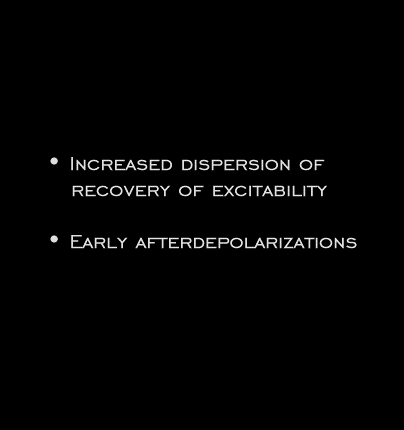
It is believed that adrenergic stimulation, provoked by stress, fear or exercise, triggers the development of torsade in patients with long QT by increasing the dispersion, or inhomogeneity of the recovery of excitability and/or by causing early afterdepolarizations. It is probably because of this critical role of adrenergic stimulation that the beta-adrenergic blocking agents have proven to be quite effective in preventing sudden cardiac death in this group of high risk patients.
